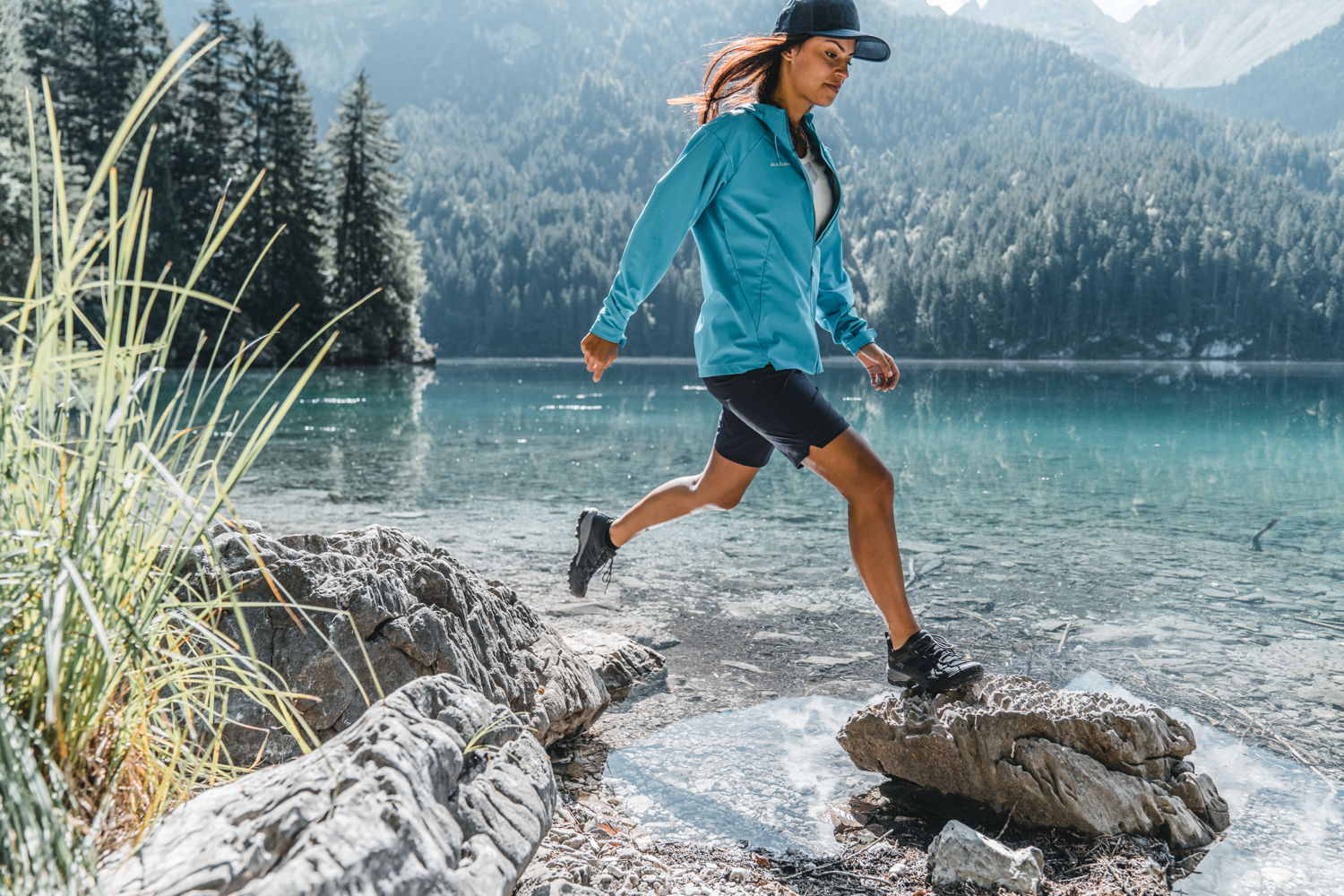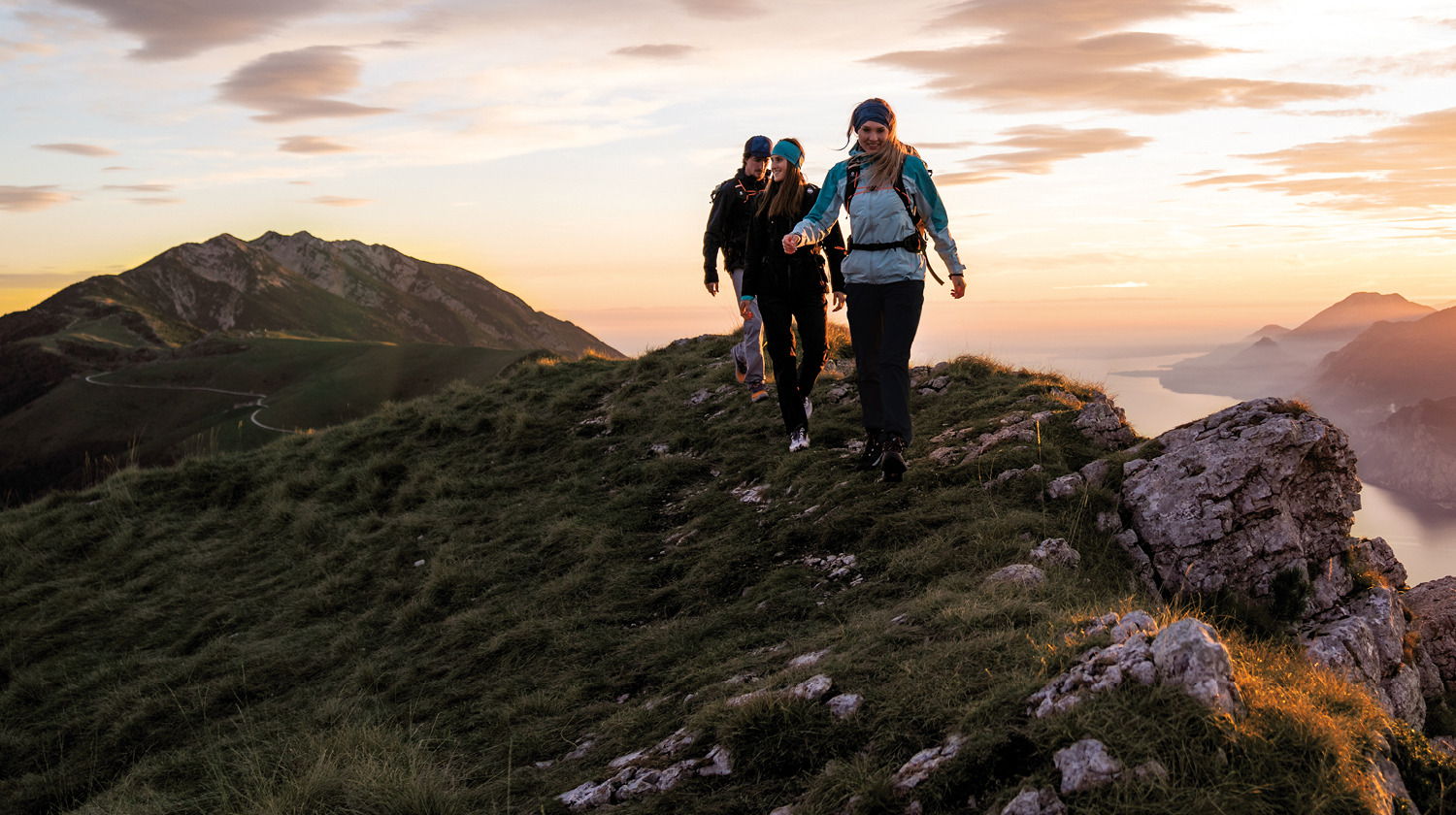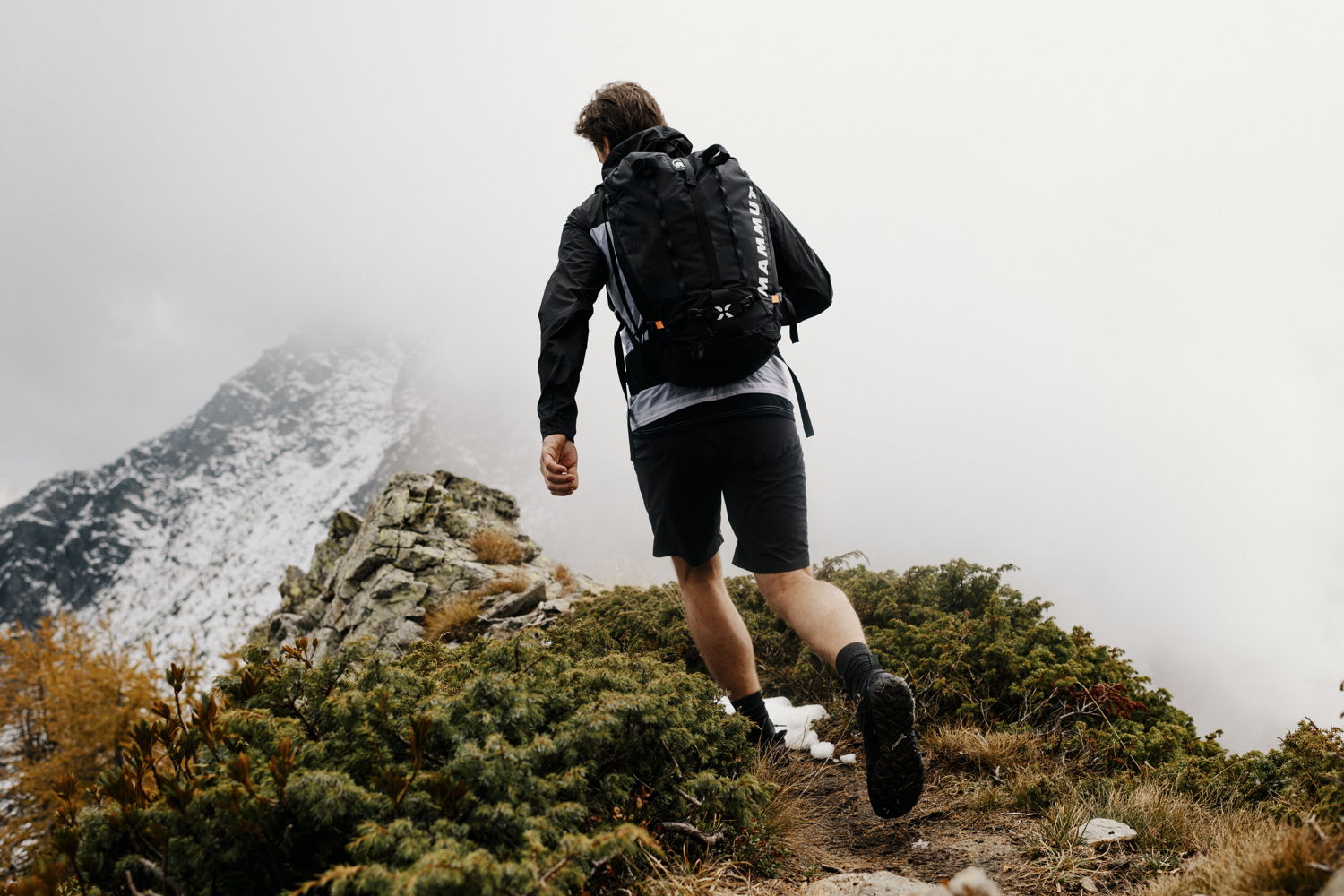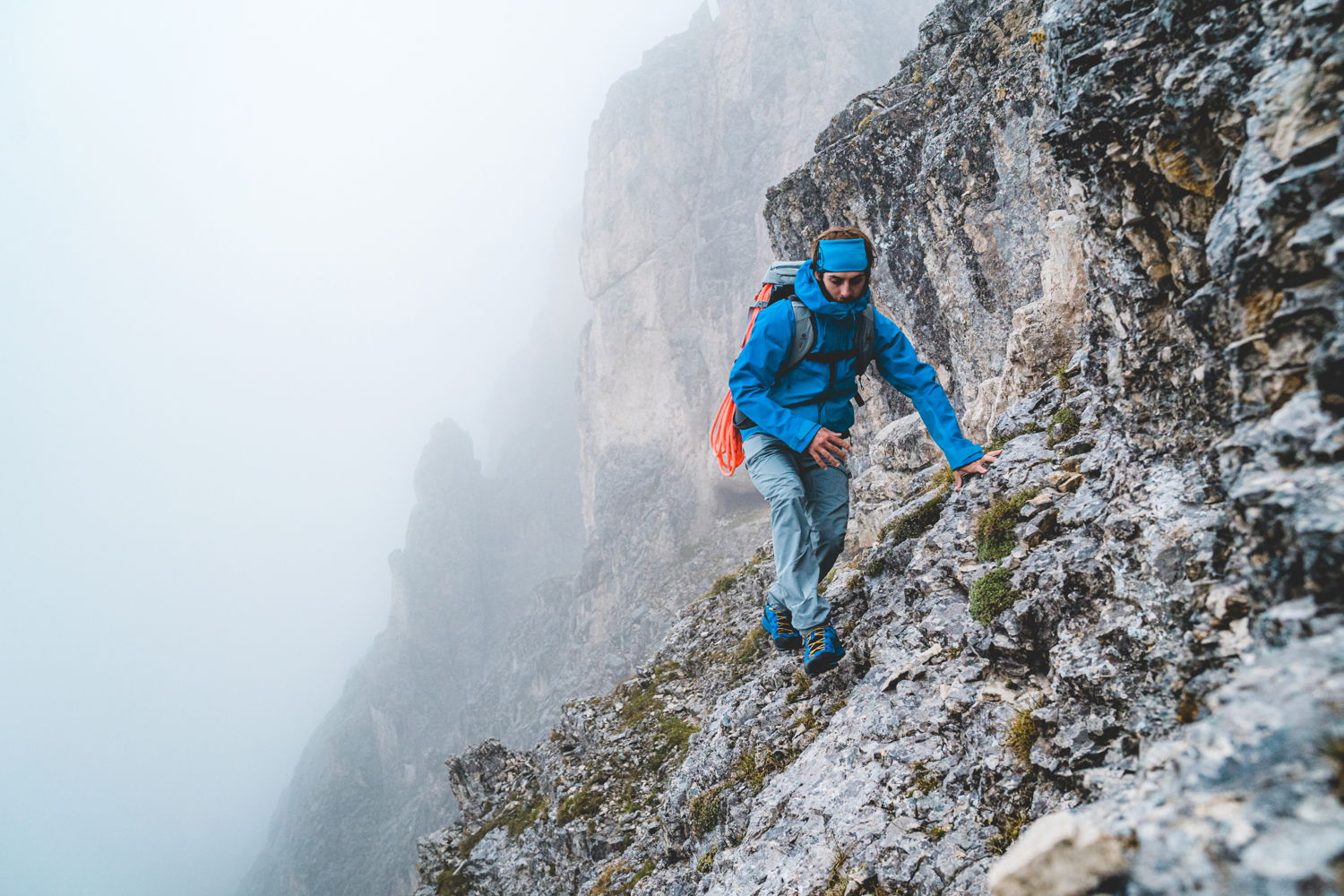WHAT MOUNTAIN SPORTS-TYPE ARE YOU?
Story | From hiking to speed disciplines or mountain tours – find your outdoor challenge for this summer
June 24, 2021

It’s the journey that matters and not the destination, so they say, but when it comes to making your way up and down a mountain, the journey can take many forms. The options can quickly become confusing. The experts from the Swiss outdoor sports specialist Mammut help you decipher the terminology and prepare for your next mountain adventure based on your interests and abilities. Answer the questions in our mountain sports quiz and find your outdoor challenge for this summer.
HIKING
Following well-constructed hiking trails (signposted yellow in Switzerland), hikers leave urban streets behind and enjoy nature in all its glory. Circuits around lakes, panoramic tours, and somewhere to call in for a drink or a meal along the way are all part of the experience. Hiking trails require no special technical skills and can be tackled with light footwear and a compact backpack. You don’t need to be super-fit or to have a finely honed sense of direction. Hiking for several days through remote, relatively undeveloped terrain comes under the category of ‘trekking’. Unlike hiking, trekkers’ backpacks contain enough food for several days, cooking equipment, and sleeping essentials. Robust, weatherproof clothing, and sufficient energy and strength for the multi-day route are also required.
MOUNTAIN HIKING
Mountain hiking involves walking in the mountains or in mountainous terrain on clear trails that do not require the use of hands. The routes follow marked hiking trails (white-red-white in Switzerland), which wind their way through diverse mountain scenery with easy to moderate ascent. The highest point is generally no more than a few hundred meters above the treeline. You don’t need lots of equipment to take up mountain hiking. Lightweight hiking boots, multifunctional clothing, and a small to medium-sized daypack are sufficient for a scenic tour. The more difficult the terrain, the greater the requirement for sure-footedness and a head for heights. Exposed sections are always secured with ropes or chains.
TRAIL RUNNING
From forest trails to gravel or meadow paths - trail runners explore all kinds of landscapes. Trail running attracts mainly performance-oriented runners who swap urban streets in favor of terrain of varying difficulty levels. As a form of long-distance running, this sport trains coordination, reactions, and endurance. The proper footwear is essential for trail running – road running shoes provide sufficient stability in easy terrain. Stil, as soon as the going becomes more demanding, you will need shoes with good stability and more tread. Like fast hiking, clothing needs to be breathable and lightweight and depending on the length of the tour, you might also need a lightweight, compact backpack. And if you want to push your limits and enter events, you can find a new competitive challenge in mountain trail running.
FAST HIKINIG
Fast hiking is a fusion of mountain hiking and trail running: ambitious mountain sports enthusiasts combine a physical challenge with an experience in nature for efficient training in the mountains. They cover long distances in a rather technical terrain on or at times beside hiking trails. This allows them to access more remote areas or wilder natural settings, with a constant sensation of weightlessness as they move lightly and at speed through mountain landscapes. You only wear and carry what you need. As a leader in this discipline, Mammut has launched a new Fast Hiking collection for this summer. The emphasis is on maximum freedom of movement with stretch materials, ideal moisture management, minimum weight, and compact packing volumes – for more speed and flexibility in the mountains, leaving you free to concentrate on the fantastic experience in the heart of nature.
ALPINE HIKING
Alpine hiking can be described as hiking in alpine, often pathless, steep terrain involving the use of hands on rocks and short climbing sections, but without requiring securing aids (signposted white-blue-white in Switzerland). Alpine hikers need robust hiking boots or (strap-on) crampon-compatible mountaineering boots to tackle demanding and exposed terrain. Sure-footedness, a head for heights, good physical fitness, and strong orientation skills are required. To be prepared for changeable weather conditions, the layering principle is key when it comes to choosing equipment.
ALPINE TOURING
Crossing a glacier in absolute silence and moving towards the summit in the first rays of sunshine - an incomparable feeling. Alpine touring is the sport for anyone who wants to climb a peak of over 3,000 or 4,000 meters. Unlike alpine hiking, a particular focus on preparation is involved in alpine touring as well as safety knowledge and appropriate equipment. Training in the use of crampons and an ice ax is important, as well as experience in rope teams and crevasse rescue. Good physical fitness, sure-footedness, a head for heights, and experience in alpine terrain are essential requirements. As with alpine hiking, the layering principle applies when it comes to selecting clothing – and to warm up on the summit, you will need to pack a down jacket and a flask of hot tea. Far from everyday life, taking in the wonderful view from a summit – what better way to enjoy the unique beauty of the fascinating mountain world?
Quiz – What mountain sports-type are you?
DOCUMENTS FOR DOWNLOAD
Mammut Mountain Sports-Type
PDF - 572 Kb
KEY VISUAL
JPG - 15 Mb





